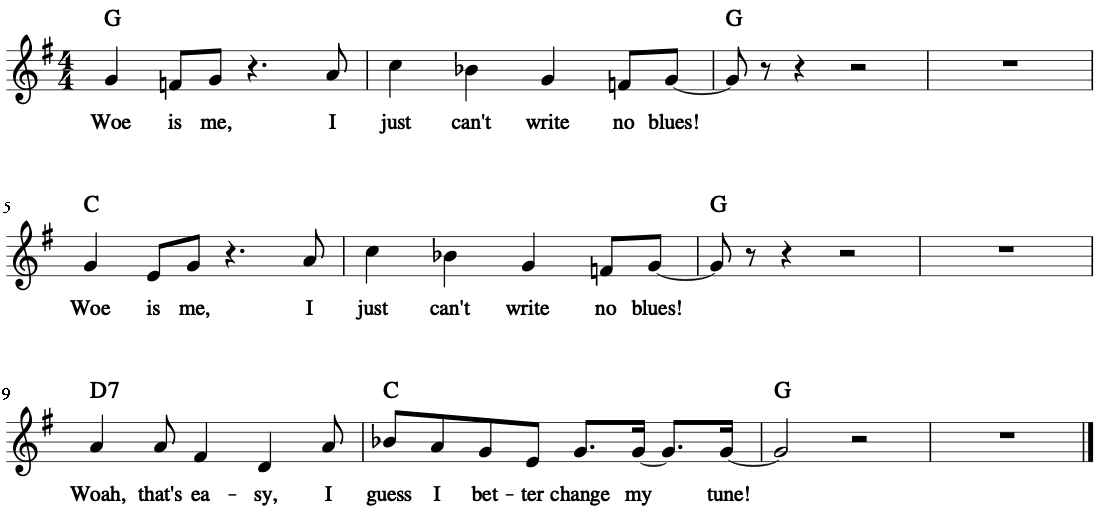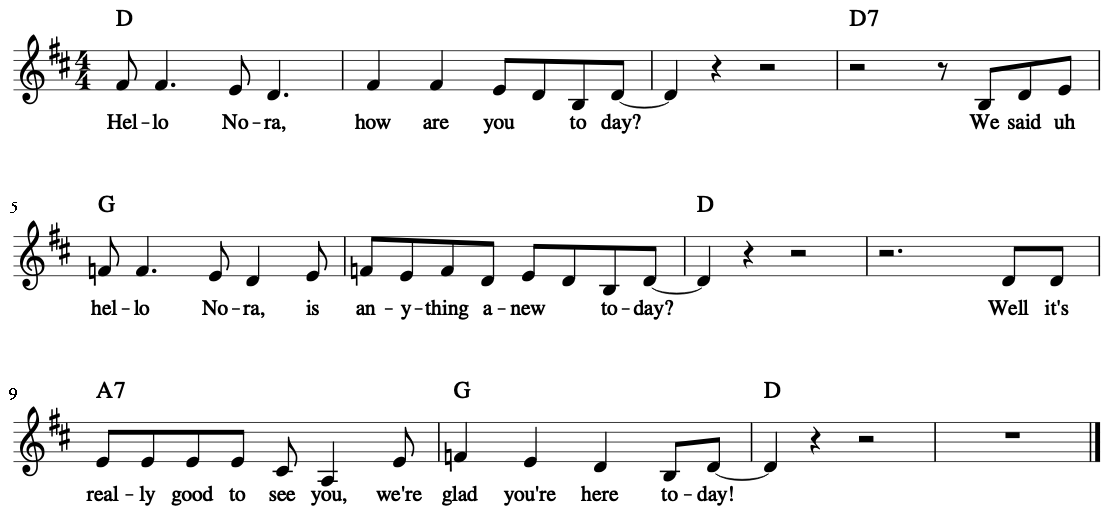Writing songs is easy! This simple technique uses the 12-bar blues pattern. These chord changes can be dressed up in countless ways, but the basic progression, written in Roman numerals, plays: I I I I – IV IV I I – V IV I I. The chords are divided up into four measure phrases. Play through the blues in a few easy keys for guitar, such as G, D, A, and E. Memorize the sound and the feel of the 12-bar pattern.
Alright, now let’s make up some lyrics! Super easy. Great improv. Fun activity with clients. Start with one phrase, repeat it, and sing an answer. That’s it! This AAB pattern matches the blues progression. To start, think of something - anything - to say, and just improvise a simple melody; perhaps you’re thinking, “Woe is me, I just can’t write no blues!” Great! Now just repeat that thought for the second phrase: “Woe is me, I just can’t write no blues!” Finally, finish your thought or respond to the statement while singing over the third phrase: “Woah that’s easy, I guess I better change my tune!” Try this example out in the key of G, as suggested in the 12 measures below. Remember to play with a little swing.

The blues can accompany anything, such as an interactive hello song: “Hello Nora, how are you today? Hello Nora, is anything new today? Well it’s really good to see you, we’re glad you’re here today!” Try this blues in the key of D.

 When repeating someone’s feelings, it’s really important to demonstrate respect and validation. You can take on some pretty heavy topics and get tough conversations started, so long as the music serves their feelings, not demean their willingness to share. A client might offer, “I feel so tired, so mad so angry, and stuck in place.” Sometimes you can play through this much of the blues, and then holding out on the dominant chord, ask the client what comes next. Sometimes the best starting place is to simply continue talking. “Well I guess it can’t get worse, and I just want to feel okay.”
When repeating someone’s feelings, it’s really important to demonstrate respect and validation. You can take on some pretty heavy topics and get tough conversations started, so long as the music serves their feelings, not demean their willingness to share. A client might offer, “I feel so tired, so mad so angry, and stuck in place.” Sometimes you can play through this much of the blues, and then holding out on the dominant chord, ask the client what comes next. Sometimes the best starting place is to simply continue talking. “Well I guess it can’t get worse, and I just want to feel okay.”
Kidz get to be super silly. Adults, too, for that matter. “I like to play in the mud, and get dirt in my hair! I like to jump in the lake, and splash splash splash splash splash! I bark like a dog, arr-ruff ruff, riffraff, rufff! Ah-woooo!”
